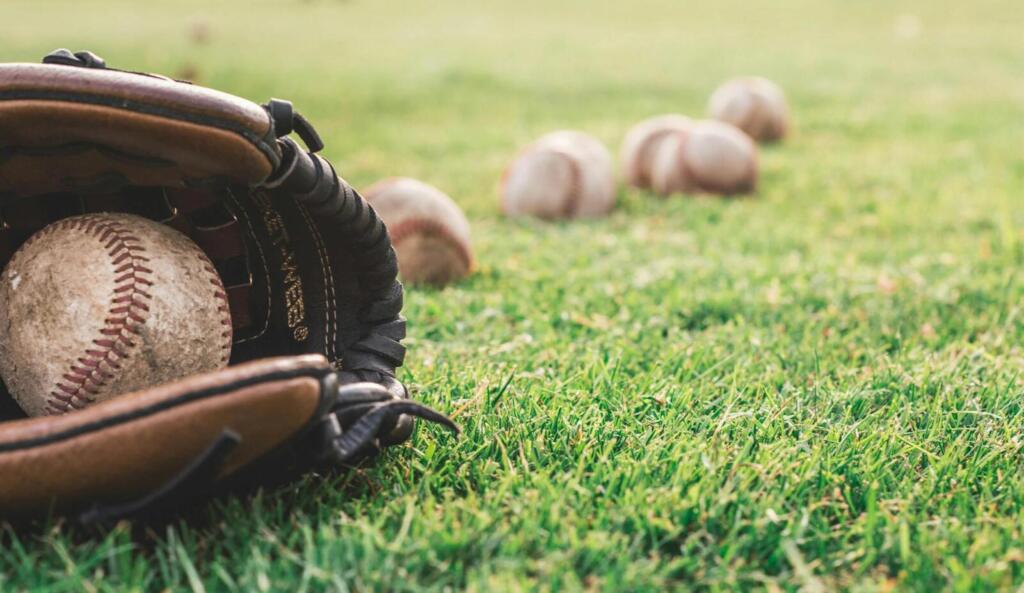
Table of Contents
Baseball comes with its own set of terms used both on and off the field, forming a unique language around the game. If you’re just starting out or simply looking to better understand how the game is discussed, learning the terminology makes following plays and strategies much easier. This guide breaks down essential baseball terms into clear categories to help you quickly make sense of the sport’s key concepts and vocabulary.
Baseball Terminology
Baseball terms cover everything from the rules of the game to in-play events and fielding techniques. Some of the most common include “strike,” “ball,” “inning,” “run,” and “out.” These are the basic building blocks used to describe what’s happening during a game and are also frequently referenced in contexts like player stats or baseball odds. For example, a “strike” occurs when a batter swings and misses, or fails to swing at a pitch in the strike zone.
Terms like “double play,” “sacrifice fly,” and “balk” are more specific and often misunderstood. A double play involves two outs in a single continuous play, usually involving quick fielding coordination. A balk is an illegal pitching move, and when it happens, any runner on base gets to advance one base.
Baseball Field
The baseball field is also known as a diamond due to its shape. It consists of four bases—first, second, third, and home plate—set at 90-degree angles from each other. The area between home plate and the outfield fence is divided into the infield and outfield. The infield includes the pitcher’s mound and the four bases; it’s where most ground balls and quick plays happen.
The outfield is where fly balls are typically caught. It’s divided into left field, center field, and right field. Key locations on the field also include the dugout (where players not currently in the game wait), the bullpen (where relief pitchers warm up), and foul territory, which lies outside the baselines.
Equipment
Baseball equipment is described using specific baseball terms that refer to items like the bat, ball, gloves, helmets, and protective gear. Bats are made from either wood or metal, with wooden bats being standard in professional leagues. Gloves differ by position—catchers use heavily padded mitts, while infielders rely on smaller, more flexible gloves for faster handling and throws.
Baseballs are tightly wound balls with a leather cover and red stitching, weighing approximately 5 ounces. Batting helmets are mandatory when hitting and running bases to protect against accidental head injuries. Catchers wear the most gear—chest protectors, shin guards, and masks—since they face pitches directly.
Pitching and Defensive Terms
Pitching involves several types of throws, each with distinct movement. A fastball is the most straightforward pitch, relying on speed. A curveball dips downward as it approaches the plate. A slider moves laterally and down. Pitchers also use a changeup to trick the batter into swinging early by mimicking a fastball’s delivery at a slower speed.
Among commonly used baseball terms, several describe key defensive plays, such as “cut-off,” “relay,” and “tag out.” A cut-off is used to shorten a long throw, typically from the outfield, to prevent a run. A relay is a coordinated sequence of throws to quickly return the ball from deep field to home or another base. A tag out occurs when a fielder touches a runner with the ball or glove holding the ball while the runner is off base.
The term “defensive shift” refers to adjusting player positions based on the batter’s known hitting tendencies. For example, against a left-handed power hitter, infielders may shift toward the right side to cover likely hit zones.
Batting Terms and Techniques
At bat, a player’s goal is to reach base or drive in runs. Several baseball terms describe how the ball is hit— a “line drive” travels fast and straight, a “grounder” rolls along the infield, and “fly balls” are hit high, with the potential to be caught or leave the park for a home run.
Batting average (AVG) is one of the simplest stats: hits divided by at-bats. More advanced metrics like on-base percentage (OBP) and slugging percentage (SLG) offer deeper insights. OBP includes hits, walks, and times hit by pitch, showing how often a player gets on base. SLG weighs hits by total bases, giving extra value to doubles, triples, and home runs.
Other important baseball terms include “bunting,” where the batter lightly taps the ball into play to advance a runner, and “switch-hitting,” when a player bats from either side of the plate. A “pinch hitter” is a substitute batter, used strategically to replace another player during a specific at-bat.
FAQs
What are the terminologies of baseball?
Baseball terms include standard rules-based terms like strike, ball, out, and home run, as well as more complex ones like balk, sacrifice bunt, and infield fly. Each term has a specific purpose in describing the gameplay, and understanding them helps follow the action more easily.
What is baseball slang?
Baseball slang is informal language used among players and fans. For example, a “can of corn” is an easy catch in the outfield, while a “heater” refers to a fastball. “Dinger” means home run, and “wheelhouse” describes the batter’s preferred hitting zone. These expressions are widely understood in baseball circles.
What are the baseball hits called?
Hits in baseball are classified using specific baseball terms based on how many bases the batter reaches. A “single” gets the batter to first base, a “double” to second, a “triple” to third, and a “home run” scores all runners and the batter if the ball leaves the park in fair territory. Additional baseball terms like “infield hit” describe situations where the batter beats out a throw to first base on a ground ball.
What are the 5 F’s of baseball?
The 5 F’s of baseball—Fielding, Footwork, Force, Focus, and Follow-through—are used to teach core fundamentals of the game. Fielding and footwork focus on clean ball handling and proper positioning, while force highlights the power behind throws and hits. Focus and follow-through emphasise mental sharpness and finishing movements effectively to maintain control and prevent injury.






